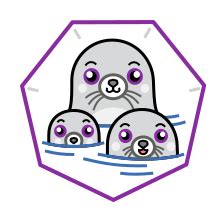
Use the podman API on openstack with the stack user
Autored by Hervé Beraud on 18 November 2019
Configure your environment to using the python-podman libraries

Configure your environment to using the python-podman libraries
podman is the next generation of Linux
container tools. You can run podman directly from the CLI by using the podman
commands (example: podman ps). For some reasons you can need to run podman
commands from python projects and instead of using some subprocess functions
like subprocess.Popen to trigger your commands you can use the
python-podman module.
python-podman is a python module that allow you to execute podman commands against a podman host in your python scripts/projects.
It’s more preferable to chose this way to call podman from python because the module ensure you to run compatible commands in version against your podman host.
python-podman is based on varlink. Varlink is used to create
server/client
for podman where client could execute podman commands against a given host
through a dedicated socket.
Podman define a varlink interface,
and then the $ podman varlink command will start a varlink server on your host and
create a socket that you can connect on with your client. Get more informations
about the podman-varlink command.
This varlink backend will allow your client to request the podman defined interface and to handle (manage containers, images, etc…) your host (through the client server connection).
Openstack now use podman to manage containers. In openstack containers are
used to launch openstack services (nova, cinder, heat, etc…), and all sorts
of server and clusters (rabbitmq, mariadb, etc…).
The goal of this article is to show to you how to setup your openstack to
allow your stack user to run podman commands by using the podman python API.
We don’t want to use neither the podman CLI, the sudo command or become root.
It can be a way to automatize things and that we can run as the stack user in
openstack.
You need an environment with the train release deployed. I suppose you will deploy your openstack by using tripleo and by provisioning some controllers/computes based on RHEL8 to deploy your openstack.
By using ssh connect you to your undercloud as the stack user:
$ ssh stack@<undercloud-ip>
Check if requirements are fully installed:
stack@undercloud ~$ rpm -qa | egrep -E "podman|varlink"
libvarlink-util-18-3.el8.x86_64
libvarlink-18-3.el8.x86_64
python-podman-api-1.2.0-0.1.gitd0a45fe.module+el8.1.0+4081+b29780af.noarch
podman-1.4.2-5.module+el8.1.0+4240+893c1ab8.x86_64
podman-manpages-1.4.2-5.module+el8.1.0+4240+893c1ab8.noarch
Here we can observe that podman, libvarlink, python-podman are installed.
Also we need to check if the podman group exist and if our stack user is
a member of this group:
stack@undercloud ~$ groups
stack podman
If the podman group doesn’t exist create him:
stack@undercloud ~$ sudo groupadd podman
And then add the stack user to this group:
stack@undercloud ~$ sudo usermod -a -G podman stack
Starts the varlink service listening on uri that allows varlink clients to interact with podman. If no uri is provided, a default URI will be used depending on the user calling the varlink service.
The default for the root user is unix:/run/podman/io.podman.
Regular users will have a default uri of
$XDG_RUNTIME_DIR/podman/io.podman.
On undercloud all the containers are managed by the root.
You can do some tests with podman by using root or sudo to observe result:
stack@undercloud ~$ sudo podman ps --format ""
dae04b68622c
60df83c4f676
b0ab3c3adf2d
stack@undercloud ~$ sudo su -
root@undercloud ~# podman ps --format ""
dae04b68622c
60df83c4f676
b0ab3c3adf2d
As you can observe stack user is a sudoers.
To start your podman varlink backend we need to run the following commands:
stack@undercloud ~$ sudo echo 'd /run/podman 0750 root podman' > /etc/tmpfiles.d/podman.conf
stack@undercloud ~$ sudo cp /lib/systemd/system/io.podman.socket /etc/systemd/system/io.podman.socket
stack@undercloud ~$ sudo crudini --set /etc/systemd/system/io.podman.socket Socket SocketMode 0660
stack@undercloud ~$ sudo crudini --set /etc/systemd/system/io.podman.socket Socket SocketGroup podman
stack@undercloud ~$ sudo systemctl daemon-reload
stack@undercloud ~$ sudo systemd-tmpfiles --create
stack@undercloud ~$ sudo systemctl enable --now io.podman.socket
stack@undercloud ~$ sudo chown -R root:podman /run/podman
stack@undercloud ~$ sudo chmod g+rw /run/podman/io.podman
stack@undercloud ~$ sudo systemctl start io.podman.socket
You can check if the podman socket is listening by using systemctl:
stack@undercloud ~$ sudo systemctl list-sockets
LISTEN UNIT ACTIVATES
/run/dbus/system_bus_socket dbus.socket dbus.service
...
/run/podman/io.podman io.podman.socket io.podman.service
If you see similar output then the socket is running and you can jump to the section “Run podman commands by using the python API”, else you need to configure and start your backend.
Also you can take a look to the
podman varlink command to run and
start your backend. Normally this command will run automatize some parts of
the previous set of commands.
At this stage normally your undercloud is setup and you can run podman
commands by using the podman/varlink API as the stack user.
You can try to get the list of all the running containers by using:
stack@undercloud ~$ varlink call -m unix:/run/podman/io.podman/io.podman.ListContainers
Normally you will obtain the same containers/output that if you runned the podman ps
command.
Now we will try to do the same things by creating a python varlink client:
stack@undercloud ~$ python -c 'import varlink; c=varlink.Client("unix:/run/podman/io.podman"); con=c.open("io.podman"); print(con.ListContainers())'
Under the hood the python-podman module do the same things that the previous command.
Now we can try to use the python-podman module directly:
stack@undercloud ~$ python -c 'import podman; c=podman.Client(); print("\n".join([el.id for el in c.containers.list()]))'
dae04b68622c
60df83c4f676
b0ab3c3adf2d
The previous example will give you the same output that if you have run:
stack@undercloud ~$ sudo podman ps --format ""
dae04b68622c
60df83c4f676
b0ab3c3adf2d
stack@undercloud ~$ sudo su -
root@undercloud ~# podman ps --format ""
dae04b68622c
60df83c4f676
b0ab3c3adf2d
As you can observe you can now call podman commands through the python API
by using the stack user.
You can start to implement your needs and your scripts based on this setup.